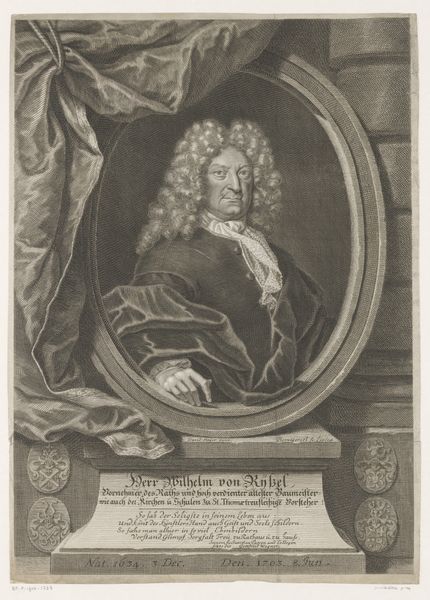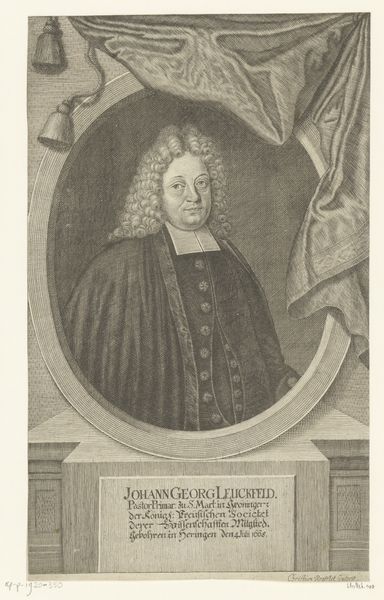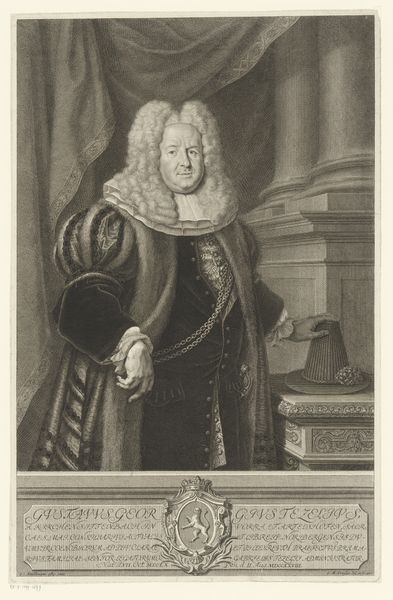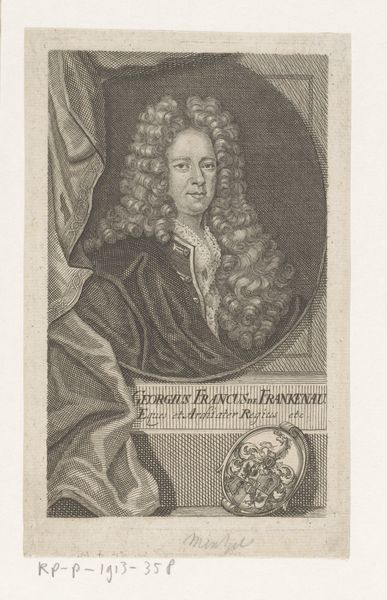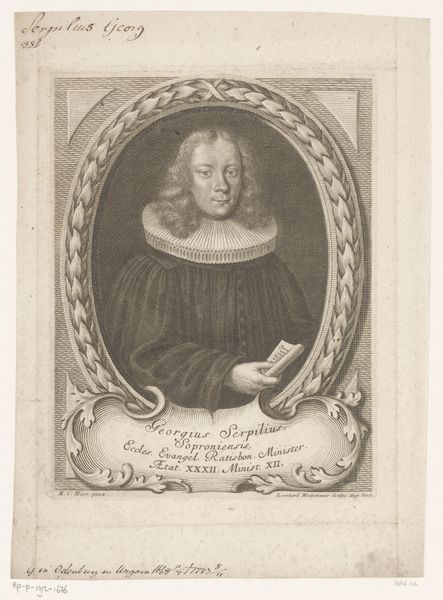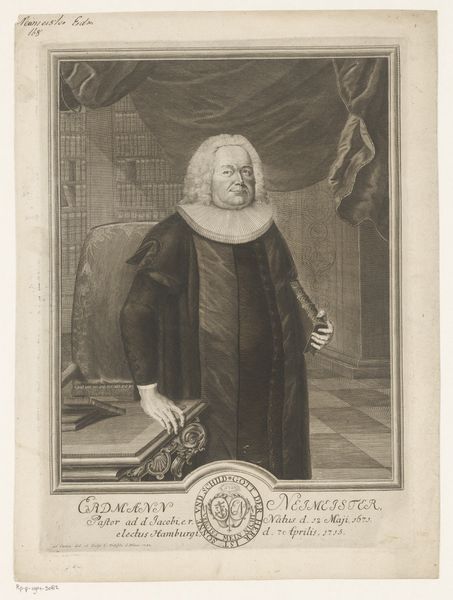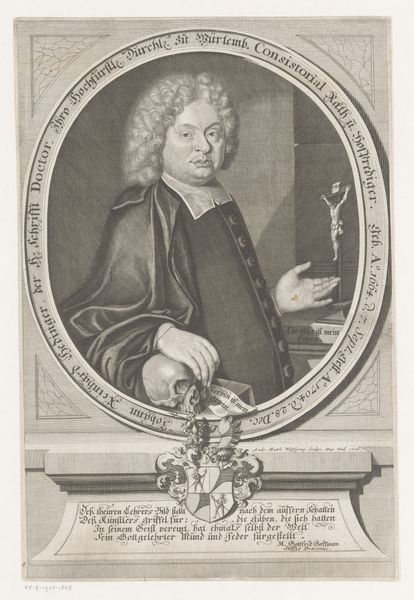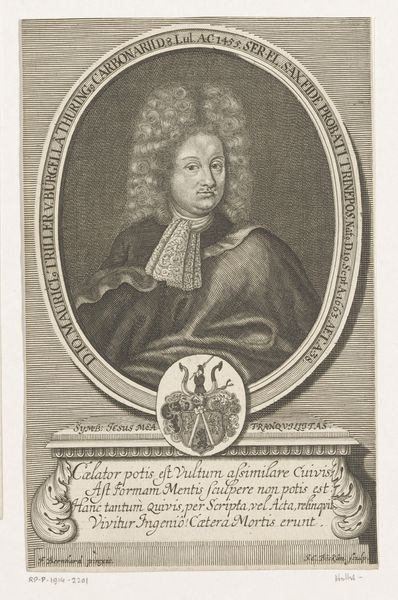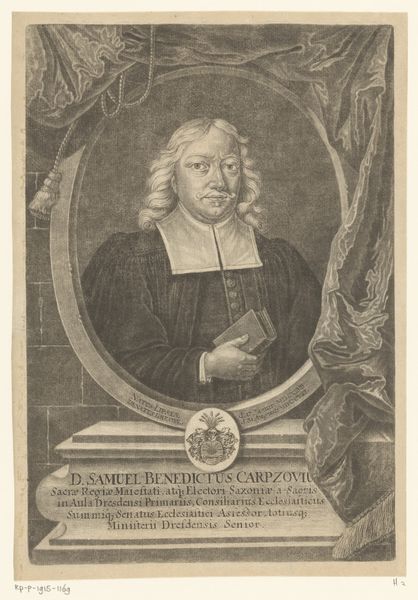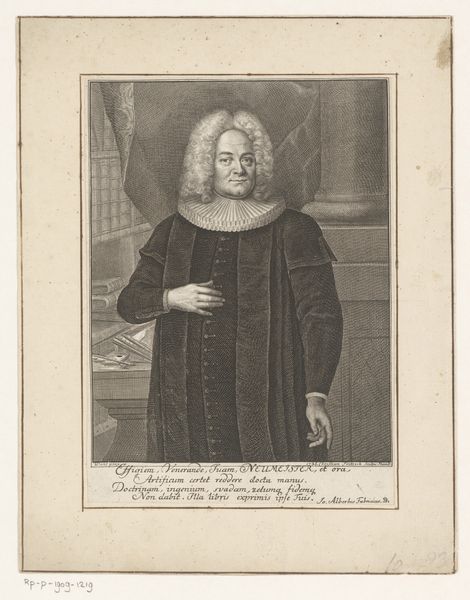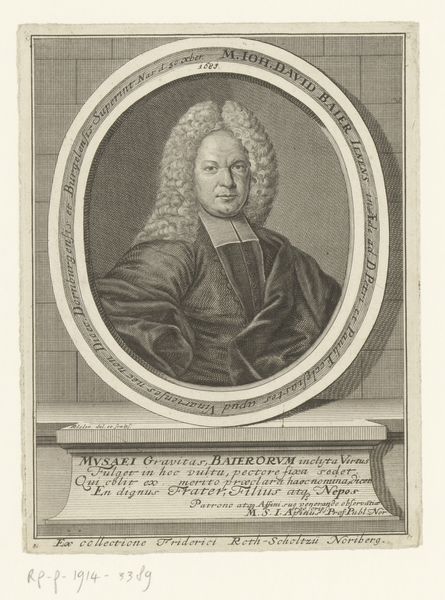
engraving
#
portrait
#
baroque
#
15_18th-century
#
history-painting
#
engraving
Dimensions: height 323 mm, width 242 mm
Copyright: Rijks Museum: Open Domain
Curator: Today, we're looking at a portrait engraving titled "Portret van Erdmann Neumeister" made in 1719 by Christian Fritzsch. It's currently housed here at the Rijksmuseum. Editor: My initial reaction? There’s something so precise and detailed, especially given its scale as a print. The textures created just by line work are incredible – the soft folds of the curtain versus the crisp pleats of the sitter’s collar. Curator: It's fascinating how this piece engages with the tradition of portraiture in the Baroque period. It captures Neumeister, who was a prominent theologian and poet, not just as an individual but also within the broader social and intellectual context of his time. Consider how his garments and accouterments position him within the clergy and the intelligentsia. What’s striking to me is the power dynamic being visualized here, especially in light of Neumeister’s social status. Editor: Definitely. Thinking about the materials – the paper, the ink, the engraver's tools – each plays a role in communicating social standing. Engravings allowed for broader dissemination of images, thus distributing Neumeister’s image and authority further than a unique painted portrait would. You see the rise of print culture mirroring a rise in individuality and personal brand in a pre-digital era. Curator: Precisely. The distribution is crucial, especially considering the religious and intellectual debates of the time. His carefully rendered likeness contributes to the construction of his identity within these debates. How can we think about his persona in light of theological schisms, gender and sexuality, and philosophical discourse? This piece allows for all that discourse. Editor: I'm drawn to the labor and skill involved. The density of the lines creating shading, the consistent pressure required. Someone meticulously transferring an image to a plate, then pulling the prints... Each impression a physical act, multiplied. This wasn't a quick snapshot; it was a calculated, crafted representation. And consider its accessibility through multiple impressions; more people could engage with this image of authority than could, say, commission their own portrait. Curator: Thinking about this piece, considering Neumeister's legacy and the social fabric of the early 18th century really enriches my understanding of the artwork as a whole. Editor: And focusing on its production reveals how even seemingly simple prints were deeply embedded in systems of labor, value, and dissemination.
Comments
No comments
Be the first to comment and join the conversation on the ultimate creative platform.

